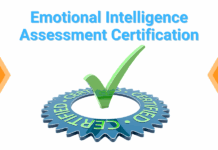
Many of us have lived, worked, or studied abroad, and if you haven't, you've certainly read one of the many articles describing cultural differences. But what these resources don't tell you is that learning about differences across cultures isn't the key to being effective. The real key is global dexterity, the ability to adapt or shift behavior in light of these cultural differences. And according to Carlos Ghosn, the former CEO of Nissan, this ability is absolutely essential in today's globalized economy:
“It is critical. More and more, managers are dealing with different cultures. Companies are going global, and teams are spread across the globe. If you're head of engineering, you have to deal with divisions in Vietnam, India, China, or Russia, and you have to work across cultures. You have to know how to motivate people who speak different languages, who have different cultural contexts, who have different sensitivities and habits.”
I've spent many years helping people to master just what Ghosn is describing, and here's your 5-step cheat sheet to build this critical skill for yourself.
1. Don't bite off more than you can chew. Focus initially on mastering one single situation at a time – like delivering bad news… or giving feedback… or speaking up at a meeting. Something that's currently outside your cultural comfort zone and that you'd like to get better at. And what you'll realize is that in learning to demystify and master this particular situation, you'll also be soaking up a more general set of skills about “how to learn across cultures” that will serve you well along other situations over time.
2. Learn the rules of the road (and how they differ across cultures): Dig deeply into your situation and decipher how the “cultural code” differs in this new culture from what you're used to. In my work, I've discovered that situations actually vary along 6 specific dimensions: Directness, Enthusiasm, Formality, Assertiveness, Self-Promotion, and Personal Disclosure. Observe how people act in this situation in the new culture and how it differs along these dimensions. Talk with a cultural coach or mentor. Do what you can to identify these differences so you can work to overcome them.
3. Compare your personal comfort zone to the new cultural rules. Even if there is a cultural difference, it doesn't mean that you personally will feel unnatural or uncomfortable engaging with this difference. People have different backgrounds, personalities, and life experiences. So, take that into account when determining where your personal “pain point” is going to be with cultural adaptation in your particular situation.
4. Personalize your behavior. Find ways to put your personal spin or “tweak” on how you need to act in the new culture. And you probably have more leeway than you think. While some cultures (and situations) have very strict standards for how to behave, most are much more forgiving. So, the real art of cultural adaptation is to find your own personal way to have your cake and eat it too: being effective and authentic in a foreign situation at the very same time. .
5. Get feedback and adjust. Make sure these “tweaks” and adjustments feel right. And also make sure they are effective in the new setting. Find someone to give you feedback — ideally someone familiar with the new culture and with sympathy for the challenges you face. And then adjust and perfect. You'll be surprised at how easy it actually is to create cultural hybrids that work.
Cultural adaptation isn't easy, but it's also not rocket science. With these tips and in mind and the courage to step outside your comfort zone, you'll be surprised at what you can achieve in a very short time.
For a downloadable, free guide to stepping outside your comfort zone, click right here. Click here to receive a free guide to 10 cultural codes from around the world.
Andy Molinsky is the author of the new book Reach: A New Strategy to Help You Step Outside Your Comfort Zone, Rise to the Challenge, and Build Confidence (Penguin Random House, 2017).
Previously published at Inc.com.





